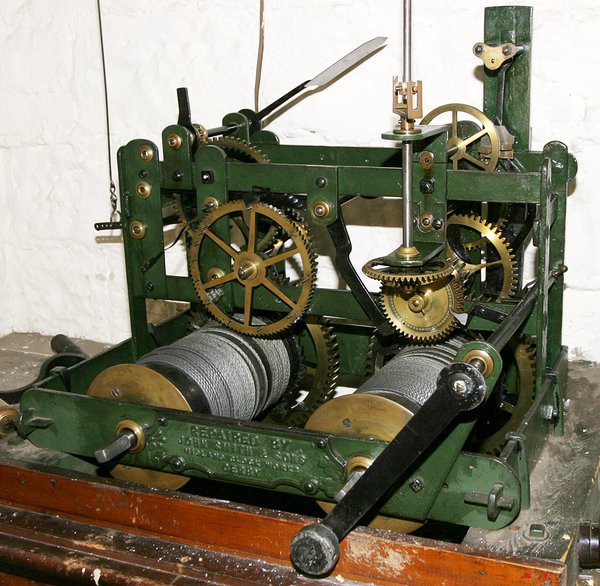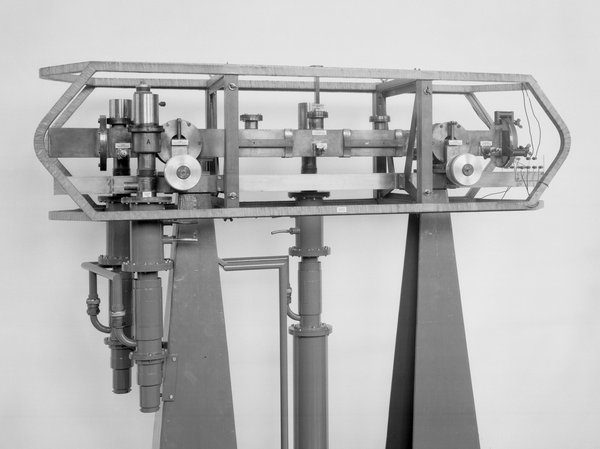The AHS Blog

Meet Radcliffe
This article was written by Brittany Cox
Meet Radcliffe: he has real feet, wings, beak, body – the makings of a living bird, but without the squishy inner bits. They were traded over a hundred years ago for clockwork.

The scarlet tanager is an American songbird, which belongs to the cardinal family and is known for its red plumage and black tail and wings. Attempting to identify the old relative at my desk proved quite challenging.
Radcliffe, as I named him, was faded, dusty, and the light in his once bright eyes had dimmed with age. He no longer resembled his vibrant cousins. After sending the Audubon Society some images, I was thrilled to learn his true identity and imagined him singing in the lush canopies of South America.
What a strange thing, to outlive and out sing all others of his species, for as a mechanized bird he will go on singing for decades to come.

Repairing Radcliffe was no easy feat. Among the various faults in the mechanism, a section of the clockwork for commencing and ceasing the performance was missing and the bellows for voicing Radcliffe needed recovering. Zephyr, a fine parchment-like sheet of pressed goat intestine, was used to recover the bellows. The paper valves, allowing and restricting the internal air flow between the bellows chambers, were replaced with a brass and plasticine system, which I found to be the most fool-proof method.

After restoring the start/stop function to the mechanism, there was one other matter to sort out before Radcliffe was ready for his performance. He had lost his tail feathers over the years, so I made him a sort of toupée…

Using brass paper clips, I made a little ‘clip on’ tail that can be easily applied or removed without damaging his body.
There was a time when Radcliffe sang just for me; now he is singing for all of you.
A clock striking thirteen
This post was written by Peter de Clercq
Clocks strike the hours one to twelve and then start all over again. And yet, in a church tower near Manchester there is one that strikes thirteen, and has done so for over two centuries.


The idea of a clock striking thirteen times is a recurrent theme in literature.
Famously, George Orwell’s Nineteen Eighty-Four (1949) begins: 'It was a bright cold day in April, and the clocks were striking thirteen.' And in Philippa Pearce’s classic children’s book Tom’s Midnight Garden (1958) a longcase clock striking thirteen inspires the boy to leave his bed and to step into the nineteenth century in a sun-lit garden.
The theme also comes up in history and in legends, and examples are quoted on Wikipedia. Some must perhaps be taken with a pinch of salt, but one that is most definitely true came up in a recent article in our journal.*
The authors live in Northwest England and are members of the AHS and meet fellow enthusiasts regularly in the Society’s Northern Section. In this article they discuss a clockmaker who worked in the region roughly in the age of Napoleon, and trace big turret clocks that can be linked to him, either as maker, installer or repairer.
A famous character in the history of the region was the 3rd Duke of Bridgewater (1736 –1803), known as the Canal Duke. His first canal was constructed to carry coal from the mines on his estates in Worsley to the markets in Manchester.
In 1789 he had a tower built to house what became known as the ‘Bridgewater Clock’. I now quote:
'There is a well known legend that the Duke witnessed his workers returning late after a lunch break. On asking them why they were late, the men complained that they could not hear the clock strike one above the noise of the yard. The Duke then promptly asked a local clockmaker to alter the clock so that it would strike thirteen at one o’clock. […] The clock remained in the tower at the Works Yard until the site was demolished in 1903.'
The clock eventually ended up in a London cellar, but was returned to Worsley in 1946 to be installed in St Mark’s Church, which then celebrated its centenary.
Unfortunately, the church is just a few metres from the M60 and a very busy intersection, so one has to strain to hear the clock above the road noise. But the evidence of the hands pointing to one o’clock and the thirteen strikes is there for all to see and hear, as can be witnessed in This short video.
* Steve and Darlah Thomas, ‘William Leigh of Newton-Le-Willows, Clockmaker 1763-1824: Part 1’, Antiquarian Horology , Vol 33 no 3 (March 2012), pages 311-334 .
With thanks to Steve and Darlah Thomas, Chester, for the information, photos and video.
Decoupling civil timekeeping from Earth rotation
This post was written by David Rooney
I spend quite a lot of time thinking about leap seconds. They’re the extra seconds inserted into time at midnight on New Year’s Eve every few years.
Recently they’ve been hitting the news, as a proposal led by some American time scientists to abolish the leap second system has caused a bit of a furore.
OK, here’s the deal. For ever, we’ve measured time by the rotation of the Earth. One rotation equals one day. At least, that was the case until Louis Essen and Jack Parry developed the first practical atomic clock, in 1955 (you can see it at the Science Museum).

This technology, once developed and refined, became a more accurate timekeeper than the spinning Earth, so we moved to atomic clocks to measure time.
But we’re animals, and we’re therefore hard-wired to the temporal patterns of the Earth’s rotation – daylight and darkness, the seasons. So a system was designed to keep the new atomic timescale in step with the Earth.
That’s the leap second, and we’ve been recalibrating the atomic clocks with these occasional one-second corrections since 1972. The resulting timescale is called Coordinated Universal Time, or UTC, and it’s never more than a fraction of a second away from Greenwich Mean Time.
So the proposal by the American scientists to abolish the leap second system and let our civil timescale drift away from GMT has set a lot of people thinking about fundamental issues in the philosophy, technology and metrology of timekeeping.
My point? Recently I read about a colloquium held last October in Pennsylvania exploring the implications of redefining UTC as a purely atomic timescale – decoupling civil timekeeping from Earth rotation.
You can read the papers and discussions here (click Preprints). This is truly fascinating stuff – measured, thoughtful and far-reaching, and the first substantial engagement I have read on the implications of this challenging proposal. Well worth a read if you’ve a spare second.